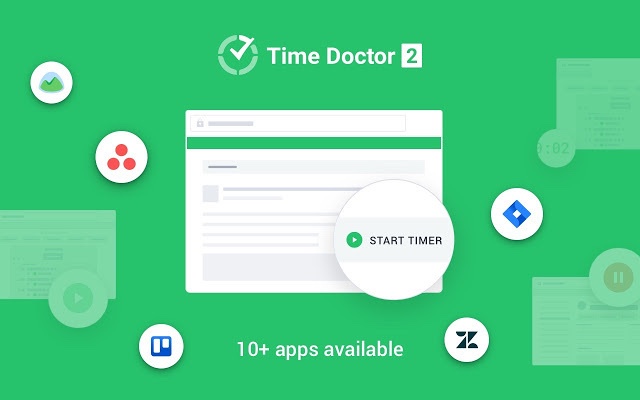Everyone is looking for that one effective time management hack to stay on top of their tasks without feeling overwhelmed.
One such technique you can use is the Pareto Principle.
According to the principle, 20% of your activities contribute to 80% of your key results. This uneven distribution actually saves time, minimizes distractions, and maximizes your productivity.
But how do you apply the Pareto Principle in time management?
In this article, we’ll discuss what Pareto Principle time management is and how to manage your time with it. We’ll also explore the benefits of Pareto Principle time management.
This Article Contains:
(Click on the links below to jump to a specific section)
- What is Pareto Principle time management?
- How to choose the rewarding 20% from your tasklist
- How to apply Pareto Principle in time management
- 3 incredible benefits of Pareto Principle time management
Let’s dive right in!
What is Pareto Principle time management?
The Italian economist Vilfredo Pareto came up with the 80/20 rule in 1906 after observing that 80 percent of his peas came from just 20 percent of the pea pods in his garden.
Based on this observation, Pareto noticed that 80% of Italy’s land was owned by just 20% of the population. When he saw that this uneven wealth distribution was prevalent all over Europe, he concluded that the uneven distribution was integral to the economy.
But it was Dr Joseph M Juran who proved that you could also apply the Pareto rule to other fields. He introduced the term Pareto Principle after successfully using Pareto’s law in operations management to improve production.
Similarly, in time management, Pareto Principle can help you choose 20% of the inputs that’ll reap 80% of your key results.
Here are some examples of the Pareto Principle:
- 80% of your sales come from 20% of your clients.
- 80% of your wealth results from 20% of your investment.
So if you can find that magical 20%, you can save time and work faster with enhanced productivity.
But how do you find the super productive 20 percent of your tasks?
Let’s find out.
How to choose the rewarding 20% from your tasklist
Here are two ways to identify the powerful 20% that’ll give you a better result:
1. Rethink your to-do lists
Usually, your to-do list would also contain unimportant tasks like checking emails.
But a Pareto optimized to-do list will only have the most important 20% of your tasks.
If you’re wondering how to prioritize your task list according to the Pareto Principle, here’s the easiest way to do so:
- First, prioritize your to-do list with the Eisenhower Principle or the Getting Things Done method.
- Then score these tasks from 1-10, with 1 needing the least effort.
- Score these tasks again from 1-10 according to their potential results. Here, 10 would be the most impactful activity.
- Finally, divide each task by their score for effort and potential results. Tasks with the lowest score will rank first in your new list.
This will give you a new task list that’ll deliver a better result with little effort.
Here, the tasks that take the least effort and give the greatest results will rank at the top of your list. The tasks with the most effort and the least impactful results would occupy the bottom of the list.
Start working on the top-ranking tasks first. Move on to the low-ranking tasks after you’ve completed the impactful tasks or delegated them.
2. Assess your goals
Another way to find the rewarding 20% is to focus on the big picture.
When you have small goals, your task will also reflect the same. Instead, your goals should be impactful or life-changing in the long run.
After assessing your goals, ensure that your tasks align with them.
To determine if you’re choosing the right 20% of the tasks, ask yourself these questions:
- Are all my tasks important and impactful?
- Are the tasks worth my time? Will they help reach my goal?
- Am I qualified enough for these tasks? Or should I delegate it to someone else?
Armed with the answers, you should be able to choose the 20% of the tasks that’ll help achieve your long-term goals.
Next, let’s explore how we can incorporate the Pareto Principle in time management.
How to apply Pareto Principle in time management
Often, people spend long work hours to produce results – leading to burnout and decreased productivity.
Alternatively, you can apply the Pareto Principle to manage your time efficiently with the help of the techniques given below:
1. Prioritize tasks
According to the Pareto rule, effort has nothing to do with effective time management. Instead, you should choose to do the 20% of the task list that’ll deliver 80% of your results.
However, prioritizing tasks this way doesn’t mean ignoring the remaining 80% of low-value tasks.
For example, a project manager focuses on high-impact tasks like talking to essential clients, resolving conflicts, etc. But they’ll also have to find time for low-value administrative work such as replying to emails, returning non-urgent phone calls, etc.
So there are two ways to deal with the remaining 80% of the small tasks:
A. Delegation
Always delegate the tasks that can be handled by someone else. You can also train your team members to deal with routine tasks or employ automation tools. That’ll save tons of time in the long run.
B. Use interstices
Interstices refer to the little free time you get between important tasks. Usually, these breaks go unnoticed as you find it challenging to work and procrastinate.
Instead, use these interstices to complete small tasks that won’t need a lot of mental energy.
For instance, you could answer your emails in the breaks between your meetings, answer phone calls en route to your office, etc.
This way, you can complete these small tasks without extending your workday, maintaining a healthy work-life balance.
2. Identify your productive hours
One way to track your productive time is to note your active hours. If you find yourself working on an important task for 30-60 minutes without losing focus – that’s your most productive time.
Also, mindfully reduce distractions during these hours like checking social media, phone notifications, chatting with coworkers, etc. But sometimes, no matter how hard you try, distractions are unavoidable.
Fortunately, you can employ the Pareto distribution for distraction elimination too.
According to the Pareto rule, 80 percent of your distraction come from 20 percent of your sources. So, all you have to do is find that 20%.
Use journaling to note your distraction and work towards eliminating them. For instance, if you’re most distracted by the calls or social media notifications, put your phone on silent during work hours.
This way, you can accomplish your high-impact tasks efficiently in much less time!
3. Time block important tasks
Time blocking is a time management technique where you assign tasks to blocks of time on your calendar.
For example, you can allot 20 minutes to review employee progress, 10 minutes to answer messages, two hours to meet with clients, and so on.
The Pomodoro technique is one useful tool you can employ to block your time efficiently.
Pomodoro refers to a unit of time – usually 25 minutes. You can divide your project into small tasks and assign them to 25-minute long time blocks.
Moreover, time blocking is the most useful tool to employ the 80/20 rule.
How?
As you have a defined start and finish point, you’ll have no choice but to start with the impactful bits of that task to complete it within the time frame.
Time blocking will also help you beat inefficiencies like Parkinsons law, which states that work expands to fill the time. For example, if you’re given a week to complete an important task that would otherwise take only a day, you’re most likely to stretch the task to a week.
However, with time blocking, you create mini-deadlines for each task that keep you focussed and productive. As a result, you can finish tasks that take weeks within a few days!
4. Build expertise in your key area
Simply choosing the best 20% of the tasks won’t help you achieve your goals – you have to enhance your skills to excel in the chosen tasks.
Once you know your goals, work towards being outstanding in the 20 percent of the tasks to achieve those goals.
Attaining goals requires both focus and discipline. So set aside time every day to sharpen your skills and to become better at doing impactful tasks.
For instance, if you’re a writer, focus on a niche like lifestyle, bitcoin, etc., that brings you the most revenue. Then work on becoming the best writer you can be in that niche.
Luckily, the Pareto rule can help you master a skill efficiently. In the Pareto Principle, you don’t have to learn everything – just the vital information that’ll help you attain your goals.
While improving or learning a new skill, focus only on the skill’s most important elements. It’ll take you much ahead of others, focusing on every minute thing that may not even contribute to the end result.
5. Reassess tasks and goals
Pareto Principle focuses on goals as it shapes the tasks you choose in your work and personal life. Assess your goals frequently to check if you’ve attained them or need to set new ones. This way, your tasks will align perfectly with your goals.
The same applies to your time and tasks. You need to regularly evaluate the following:
- The accuracy of your time estimation.
- Your satisfaction with the time spent.
- The changes you need to make.
Now, you can track your time and progress on your own, or you could save the trouble and try effective time management tools like Time Doctor.
What is Time Doctor?

Time Doctor is a powerful project management tool that’s a favorite among major businesses like Ericsson as well as small ones like Thrive Market.
It offers tons of features to help you track time and projects you’re working on:
- The time tracker tracks your time spent on tasks.
- Time Doctor’s comprehensive reports and analytics give you a detailed report on how you spend your time.
- The offline time tracker tracks your time even when your internet connection is down.
- The app and website monitoring feature give you an insight into the time you spend on unproductive sites and applications.
- Time Doctor’s compatibility with Windows, Mac, Linux, and Android operating systems lets you track productivity across all devices.
With these features, a time management tool like Time Doctor will help you apply Pareto Principle by accurately tracking your time, identifying time usage patterns, and monitoring your progress.
If you’re still unsure about how Pareto Principle works with time management, check out its advantages.
3 incredible benefits of Pareto Principle time management
Here are the three biggest advantages of applying the Pareto rule to your time management:
1. Greater productivity
In a typical time management system, you’ll start working on any urgent or important thing. However, all tasks may not contribute to the end results.
For example, a software engineer may fix all the bugs to stop their app from crashing. However, only 20% of these bugs may be the reason behind the crash.
To rectify the problem, apply the Pareto Principle in time management to pick and work on the most impactful tasks. This way, you needn’t spend extra time on unnecessary tasks to achieve your goals. This technique also can enhance your personal productivity.
Pro tip: You can reverse the Pareto Principle to identify the activities that keep you from giving your best.
2. Improved problem solving
Pareto analysis is a proven way to solve work issues.
Here are a few steps to apply the Pareto rule of uneven distribution to time management as well as decision-making:
- List down the problems.
- Identify the causes and the deadline of these problems.
- Group similar problems together.
- Assign values of 1-10 based on each problem’s impact on your business – with 1 being the least impactful.
This’ll allow you to focus on the 20% that’ll solve 80% of your problems – staying within the deadline.
3. Better goal setting
People often feel tempted to take on multiple small goals that won’t make much difference in the long run. Contrary to this, most successful people focus on one big goal at a time.
When you choose small goals, the tasks undertaken will also be less impactful. You’ll have to spend time on multiple tasks, which might stress you out.
The Pareto Principle requires you to choose one main long-term goal, along with a few prioritized goals that are life-changing or impactful. You can also use the 80/20 rule to filter out and select goals that’ll help you in professional and personal development.
Here’s one way to set your smart goals:
- List down 10 important goals.
- Ask yourself which among these goals will have the greatest impact on your life?
- Next, pick the second most important goal.
These are the vital 20% of your goals that you should focus on.
Once you achieve them, you can move on to your next set of goals. This way, you can achieve so much more than blindly wasting energy and time on small goals.
Wrapping up
The Pareto Principle is the Swiss Army knife of life that can be used at work and in your personal life.
When applied to time management, it’ll let you focus on the important goals and the most impactful tasks to help you achieve them.
Learn to apply Pareto Principle in time management with the tips covered in this article. Additionally, to check how successful you are at employing this technique, you can track your time and productivity with a robust time management tool like Time Doctor.
Sign up for Time Doctor’s free trial to track your daily tasks and long-term goals today!

Vaishali Badgujar is a Content and SEO specialist at Time Doctor, an employee-friendly time-tracking system that boosts productivity.


